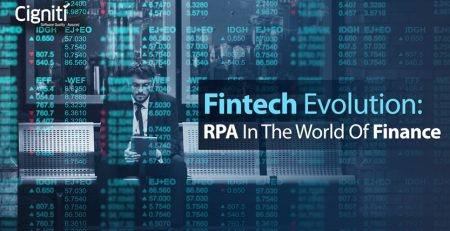Managing Enterprise Financial Crime in the post-pandemic world
It’s an understatement to say that we live in a very different world than a couple of years ago. The pandemic has brought about extraordinary changes in the way customers consume goods. From online shopping for essential goods and services, e-commerce businesses to doing financial transactions instantly, there has been a colossal shift towards a more digital and seamlessly connected world.
This has triggered the interest of fraudsters, money launderers and other cybercriminals looking to take advantage of the digital influx. Fraudsters are targeting gullible merchants that are unfamiliar with e-commerce and lack the resources to provide advanced security measures to their consumers. Consumer-focused online transactions rely on verified consumer identity, making identity data a key target for fraudsters. Fraudsters can use the stolen data (Social Security numbers, addresses, card details) to create a fake ID and steal funds from accounts; take out loans; or create new credit lines in the name of the customer.
During this pandemic, Internet traffic surged by about 60% and, as a result, the amount of money spent online on shopping nearly doubled. The average value of attempted fraudulent purchases increased 69% year-over-year, according to a report from the digital fraud prevention company, Sift. Consumer information can be stolen through many channels, whether it’s redirecting a consumer to a malicious page for checkout or mirroring a shopper’s screen to grab information.
The overall weakening of the economy has also revived money laundering opportunities for criminals. Whether it is investing in failing businesses, buying cheap foreclosed homes with cash to conceal illegitimate profits, or moving funds through financial networks by restructuring their credit or previously held loans, money laundering has clearly seen an upsurge.
2020 saw a phenomenal increase in financial crime, hitting a record high of $42 billion. The rise in financial crime led not only to financial losses but also to losses in reputation and customers. What’s also concerning is that only 56% of companies investigated serious fraud incidents.
There is a multitude of factors that are contributing to the spurt of these financial crimes:
- The digital payments revolution and the rapid rise of online and mobile payments channels
- Security limitations of newer digital technologies such as cloud, mobility, social media, etc.
- Steady enhancement and development of digital transformation and new banking channels for fraudsters to infiltrate
- Rise in sophisticated crimes by fraudsters and fraud rings such as Carbanak attacks, identity theft, distributed denial-of-service (DoS) attacks, ransomware, infiltrated POS systems, and man-in-the-middle fraud.
- New avenues for financial crime. Example – casinos, online gaming, cryptocurrencies, etc
To understand this topic better, it’s essential to call out the subtle differences between fraud and financial crime. There is a general misconception about both being synonymous terms. They are, to a certain extent, however, with a subtle difference. All fraud is considered a financial crime, but not all financial crimes may be regarded as fraud. According to the Financial Conduct Authority (FCA), financial crime is any criminal conduct relating to money, financial services, or markets, including any offence involving the following:
- Fraud or dishonesty
- Misconduct in, or misuse of information relating to, a financial market
- Handling the proceeds of crime
- The financing of terrorism
A KPMG Global Fraud Survey found 43% of respondents currently had no integration between fraud and financial crime compliance. It’s best practice to align such all-risk response solutions under one single enterprise platform, a mission control for risk, if you will. Beyond decreasing the risk of financial attacks and regulatory fines, integrating fraud and financial crime compliance can also increase operational efficiency.
From an operational efficiency perspective, fraud and compliance departments usually require much of the same information. When a financial crime occurs, organizations take the appropriate action. However, this becomes a challenge both from an investigation and a cost perspective without the complete picture of fraud. Furthermore, if multiple systems are maintained, it also means that various teams are kept, each with non-transferable skills.
EFCM, AFC solutions, FCRM, eGRC… a myriad of acronyms defines the enterprise-wide solutions being bought by organizations worldwide to tackle this ever-evolving financial crime and fraud landscape. These investments, coupled with the adoption of advanced technologies such as artificial intelligence and machine learning, enable enhanced transparency, improved decision-making, and reduced operational costs of managing financial crime and fraud.
Why is there a growing need for digital enterprise solutions to fight fraud and financial crime?
- Increasing regulatory compliance (FATF, GDPR, FATCA, 5AMLD, MiFID) mandates and potentially avoiding costly fees and penalties
- Evolving frauds worldwide and the need to uncover hidden patterns, trends, and schemes that traditional fraud detection methods may miss
- A cloud-based model to help reduce total cost of ownership, avoid significant upfront investments, and reduce capital expenditure on IT infrastructure. Firms don’t need to engage in a prolonged IT development lifecycle. Instead, the cloud providers supervise software upgrades and security updates.
- Ever-increasing data load on the legacy Enterprise infrastructure
- Increased downstream security challenges
- Measuring and helping Improve performance by monitoring and identifying vulnerable areas of the organization.
- Producing cost savings by reducing waste and abuse
- Need for intelligent AI/ML-based intelligent real-time surveillance capabilities and monitoring solutions
- A need to break away from siloed ways of tracking Fraud risk and Financial crime
According to a MarketsandMarkets report, “The global market in this space is estimated to reach US $60.8 billion by 2025, up from US $32.3 billion in 2020, growing at a CAGR of 13.4%”.
Digital technologies bring multiple benefits to financial institutions. They help save costs, improve productivity, and increase efficiency while maintaining the trust quotient. Financial institutions have begun to adopt new-age anti-financial crime solutions that leverage AI capabilities, such as ML, RPA, and NLP, as they are aware that incumbent legacy fraud management solutions cannot meet their needs. Some leading solution vendors are also investing in advanced and predictive analytics, big data, cloud, artificial intelligence (AI), machine learning (ML), natural language processing (NLP), robotic process automation (RPA), blockchain, deep learning, and advanced Explainable AI (XAI) to allow a better understanding of the results from the decision engines.
Another option available for banks and financial institutions is to use native solutions but building an anti-financial crime/fraud infrastructure in-house is expensive. The costs include server maintenance, licensing, security patching, software upgrades, and regular watchlist updates. Small and medium financial institutions find it uneconomical to build such robust solutions. Many large financial institutions also want to avoid the complexities involved in managing in-house anti-financial crime platforms. This is where several cloud-based models and an increasing number of partnerships between product companies and system integrators to provide software-as-a-service (SaaS) offerings make advanced enterprise financial crime and fraud solutions affordable at scale for financial institutions. These new-age cloud-based offerings help deliver scalable, reliable, and cost-effective solutions. Some of the key advantages are:
- Better management of IT costs and lower total cost of ownership (change management, implementation, onboarding, maintenance, and support)
- Ease of deployment in the cloud
- The SaaS model aligns well with a financial institution’s APIfication strategy to adopt open banking.
A few examples of cloud-based managed services in the financial crime and Fraud management domain are KYC as a Service, AML as a Service and Fraud Prevention as a Service.
Conclusion
Cigniti is partnering with two exciting players in the financial crime, risk, and compliance space to implement AI/ML powered intelligent anti-money laundering, compliance, and fraud risk management solutions. These partnerships combine Cigniti’s domain expertise in the BFSI space, powered by industry-leading quality assurance and engineering knowhow, with some of the world’s leading holistic enterprise grade fraud, financial crime, and compliance solutions.
Schedule a discussion with our BFSI Testing and Banking domain experts to find out more about managing financial crime in the post-pandemic world.





Leave a Reply